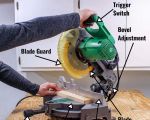How to Use a Torque Wrench for Precise Measurements
If you're someone who enjoys working on DIY projects, car repairs, or construction tasks, then having a torque wrench in your toolbox is a must. A torque wrench ensures that bolts, nuts, and screws are tightened to the manufacturer’s recommended specifications. This tool is crucial for achieving precise measurements and preventing over-tightening or under-tightening, which can cause damage or lead to a lack of structural integrity.
1. Understanding the Torque Wrench
A torque wrench is a tool used to apply a specific torque (or rotational force) to a fastener such as a bolt or nut. The purpose of using a torque wrench is to ensure that the fastener is tightened to a certain tension, avoiding common problems like over-tightening or under-tightening. There are different types of torque wrenches, including beam, click, and digital, but the basic principle remains the same—applying the correct force to achieve proper tightness.
2. Choosing the Right Torque Wrench
Before you start using a torque wrench, it’s important to select the right one for your job. Torque wrenches come in different sizes and ranges, so ensure that the wrench you select can cover the torque range you need for the specific task. For example, if you’re working on a car engine, you may need a torque wrench with a higher range, while a lighter job, such as tightening screws on furniture, might require a smaller range. A standard torque wrench typically ranges from 10-100 ft-lbs (foot-pounds) or 15-135 Nm (newton-meters).
3. Setting the Torque on Your Wrench
Once you’ve chosen your torque wrench, the next step is setting it to the desired torque level. This is typically done by adjusting the wrench's setting dial or digital controls (depending on the type of torque wrench you have). For a click-type wrench, you'll adjust the setting until you hear a distinct “click” sound when the target torque is reached. This sound acts as an indicator that you've applied the correct force. For a beam wrench, you’ll read the applied torque on the beam itself.
4. How to Use a Torque Wrench Properly
To achieve the most accurate readings with your torque wrench, it’s important to follow the correct procedure:
- Step 1: Insert the appropriate socket onto the torque wrench.
- Step 2: Place the wrench on the fastener (bolt, nut, etc.) that you wish to tighten.
- Step 3: Turn the handle clockwise (or counterclockwise, depending on the direction of the threads) while applying force.
- Step 4: Once the wrench reaches the set torque, it will either click (for a click-type wrench) or indicate the target torque visually (for digital or beam wrenches).
- Step 5: Release the wrench from the fastener and check the tightness.
5. Why Using a Torque Wrench is Important
Using a torque wrench ensures that your fasteners are tightened precisely to the manufacturer’s recommendations. This can prevent damage to threads, help avoid unnecessary strain on parts, and ensure that assemblies are securely fastened. In automotive repairs, for example, over-tightening a lug nut can cause the wheel to become warped or even crack, while under-tightening can cause the nut to come loose during driving, posing a safety risk.
6. Common Mistakes to Avoid When Using a Torque Wrench
While a torque wrench is a simple tool to use, there are some common mistakes that you should avoid:
- Not calibrating the wrench: Regularly calibrating your torque wrench ensures accuracy. Check the manufacturer’s instructions for when and how often to calibrate.
- Using the wrong torque setting: Always refer to the manufacturer’s torque specifications for the proper setting. Incorrect settings can lead to over-tightening or under-tightening.
- Over-tightening: Avoid applying excessive force after the wrench clicks or indicates the correct torque. Going beyond this can lead to damage.
- Using the wrong type of torque wrench: Ensure you're using the appropriate wrench for the task. A beam wrench is good for light jobs, but a digital or click-type wrench is often better for more precision-dependent work.
7. Maintaining Your Torque Wrench
To ensure longevity and accuracy, it's important to maintain your torque wrench properly. Here are a few tips to keep your wrench in top condition:
- Store the wrench in a protective case to avoid damage from dust or physical impact.
- Return the torque wrench to its lowest setting after each use. This will help maintain the internal spring mechanism.
- Clean the wrench regularly, and make sure the head is free from grease or dirt that could affect its performance.
8. Conclusion
Incorporating a torque wrench into your toolbox is an investment in ensuring precision and safety in your mechanical projects. Whether you’re fixing your car, assembling furniture, or working on a larger construction project, using a torque wrench guarantees that your fasteners are tightened correctly. By following the steps above and taking care of your tool, you can ensure accurate measurements and prevent costly mistakes in the future.
For more quality tools and accessories, visit our website at ToolNest, where you can find the best torque wrenches and other essential tools for all your needs.









